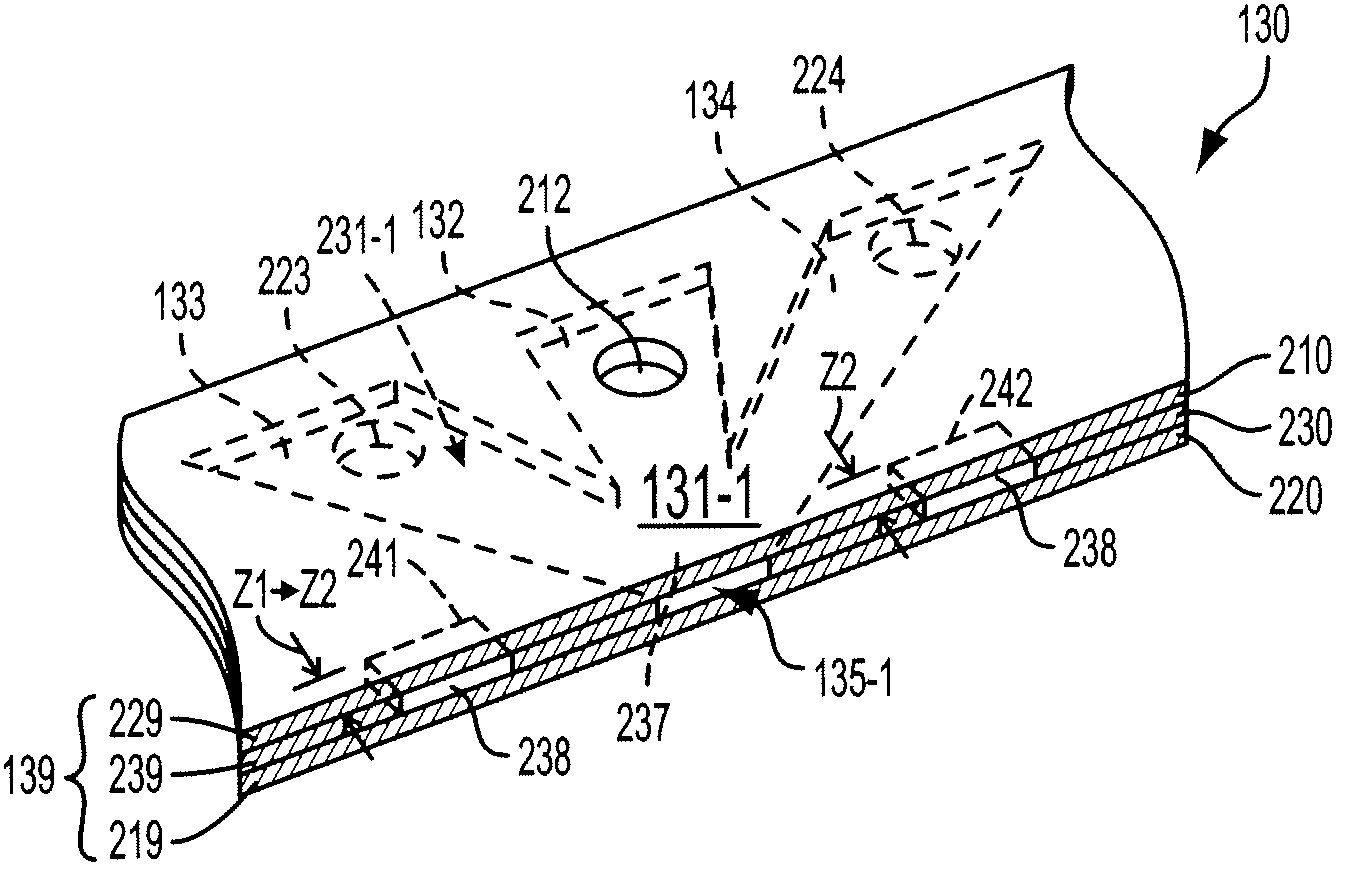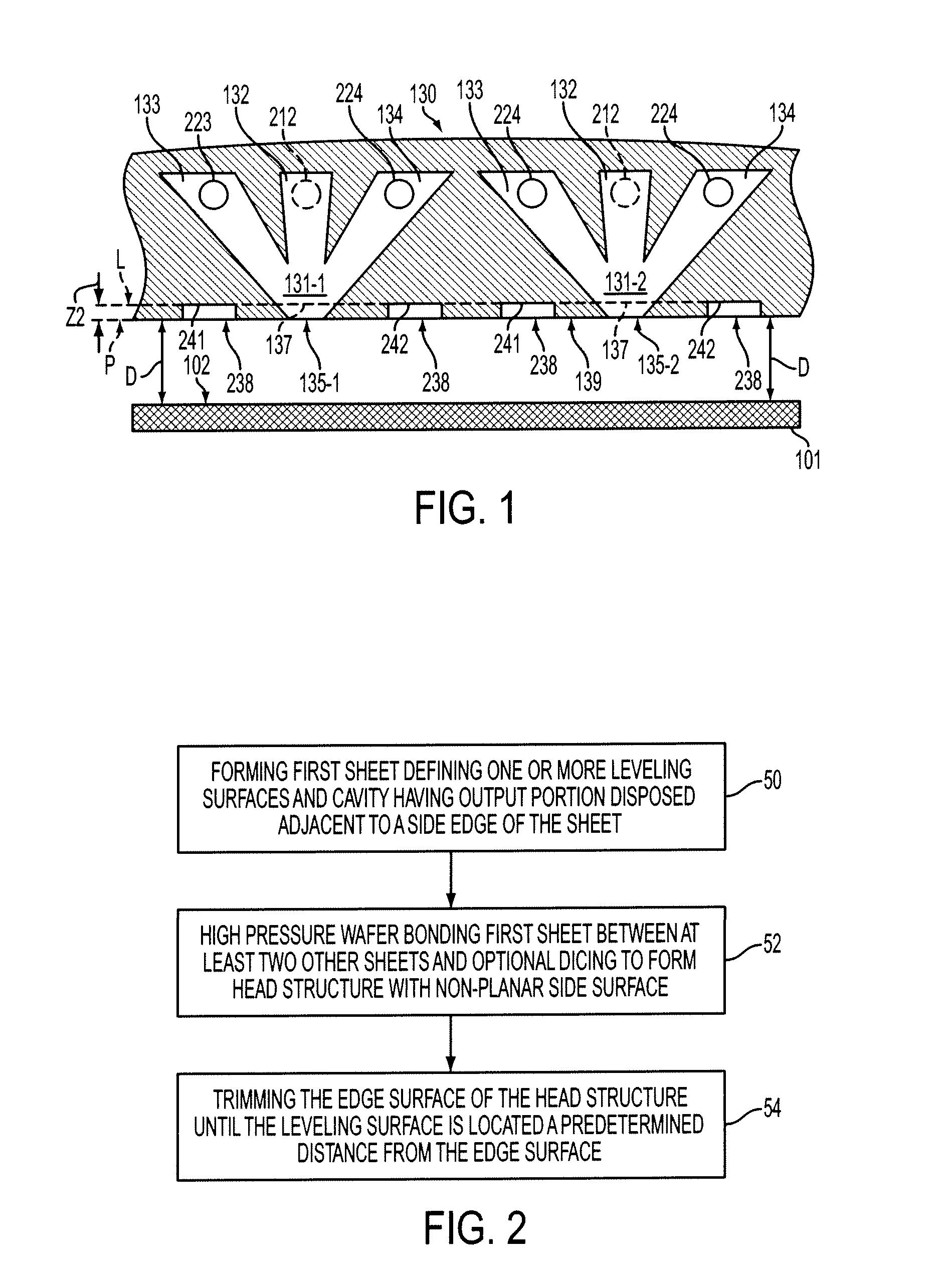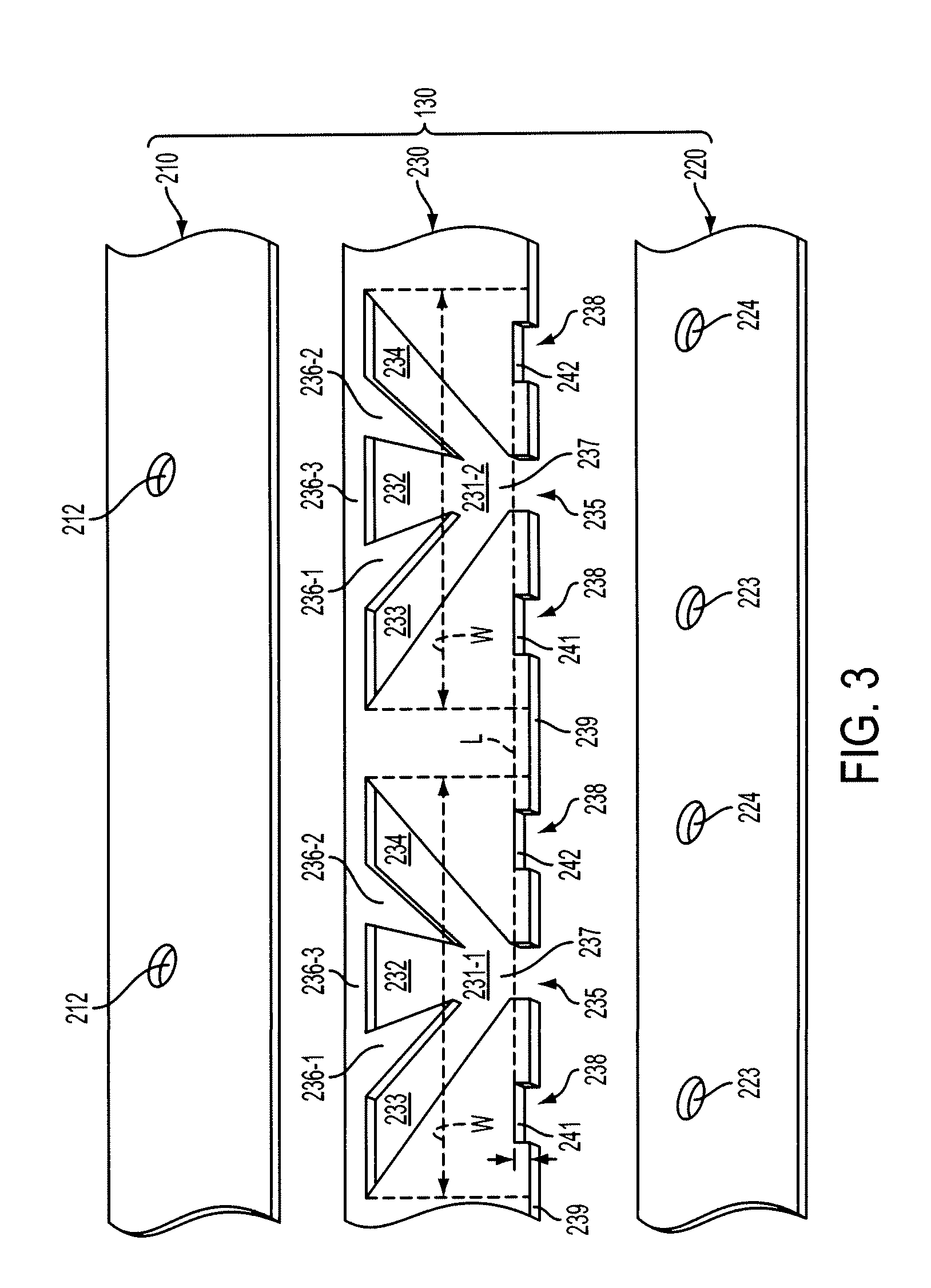Extrusion head with planarized edge surface
a planarized edge surface and extrusion head technology, applied in the field of micro extrusion systems and methods, can solve the problems of large variation in flow impedance of multiple orifice systems, unavoidable and unpredictable shape changes of extrusion heads, and inability to meet the requirements of micro extrusion structures, etc., to achieve highly precise planarized edge surfaces, facilitate the trimming of edge surfaces, and facilitate the effect of edge surface trimming
- Summary
- Abstract
- Description
- Claims
- Application Information
AI Technical Summary
Benefits of technology
Problems solved by technology
Method used
Image
Examples
Embodiment Construction
[0023]FIG. 1 illustrates a portion of an extrusion head 130, which makes up part of a micro extrusion apparatus for producing extruded structures on a substrate 101 in accordance with an embodiment of the present invention. As set forth in additional detail below, extrusion head 130 includes multiple sheets (e.g., metal plates) that form multiple fluidic channels (e.g., fluidic channels 131-1 and 131-2) that extrude material through associated outlet orifices (e.g., outlet orifices 135-1 and 135-2) that are arranged along an edge surface 139 (shown in edge view in FIG. 1). Each fluidic channel (e.g., fluidic channel 131-1) includes a central channel 132 positioned between opposing (first and second) side channels 133 and 134, with all three channels communicating with associated outlet orifice 135-1 by way of an output junction (output portion) 137. Each central channel 132 has a substantially isolated inlet end and an opposing outlet end that coincides with output junction 137. Sim...
PUM
| Property | Measurement | Unit |
|---|---|---|
| width | aaaaa | aaaaa |
| thickness | aaaaa | aaaaa |
| aspect ratio | aaaaa | aaaaa |
Abstract
Description
Claims
Application Information
 Login to View More
Login to View More - R&D
- Intellectual Property
- Life Sciences
- Materials
- Tech Scout
- Unparalleled Data Quality
- Higher Quality Content
- 60% Fewer Hallucinations
Browse by: Latest US Patents, China's latest patents, Technical Efficacy Thesaurus, Application Domain, Technology Topic, Popular Technical Reports.
© 2025 PatSnap. All rights reserved.Legal|Privacy policy|Modern Slavery Act Transparency Statement|Sitemap|About US| Contact US: help@patsnap.com



